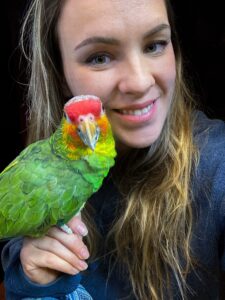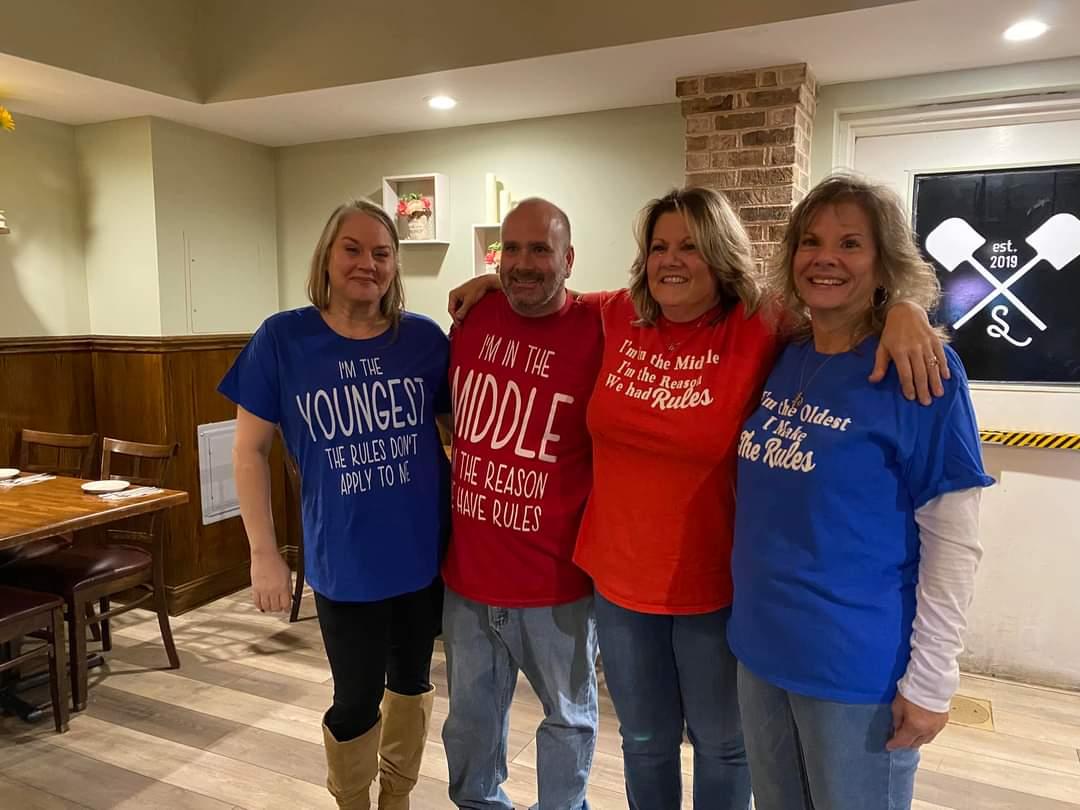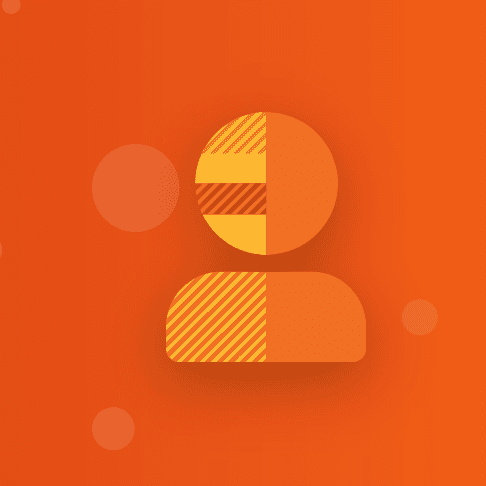Emily’s deep curiosity drew her to try 23andMe, but she didn’t anticipate being floored by what she would learn.
“I was interested in the health information, of course,” said Emily, a mother of three who runs a small business and farm in Ohio with her husband. “But I guess the bigger part of why I tested is I’m just curious. I’m interested in history, genealogy, science, and the fun stuff that DNA can tell you. I didn’t expect this.”
Her results offered her a layer of information about her health and traits, and then something entirely unexpected expanded what she understood about herself and her family.

She first focused on the health reports when she got her results in early 2023. Emily, who is in her 30s, was increasingly aware that prevention was a much better approach to her health than simply treating something after you’ve already gotten sick. She wanted to know if she had any genetic health risks for things like breast and ovarian cancer*, blood clots*, or her likelihood for certain heart conditions that she should know about and try to prevent with the help of her doctor.
She learned instead that she had an increased genetic likelihood for type 2 diabetes. It surprised her because she’s active and in good shape. But while lifestyle and diet play a significant role in whether one develops type 2 diabetes, genetics is also a factor.
“It’s something for me to keep an eye on and take seriously,” said Emily, who is very health conscious. “That was probably the most valuable health information for me.”
A DNA Surprise
After learning a bit more about her health, Emily turned to her ancestry reports. That was when her jaw hit the floor.
“I saw that I shared 25 percent of my DNA with someone I didn’t know,” Emily said.
Customers have the option of opting into the DNA Relatives feature. DNA Relatives connects customers to other 23andMe customers who have also opted in, from close relatives to more distant third or fourth cousins.
In Emily’s case, she and an unknown relative named Eric shared 25 percent of their DNA. The DNA Relative feature predicted Eric was her uncle. Emily is in her 30s, while Eric is in his 50s. She called her sister.
At first, she wondered if maybe her grandfather had had a child they never knew about, but quickly looking at a dropdown list of other relatives who share 25 percent, she saw that half-brother was one of them. That made more sense. Then, she read the information Eric shared in his profile. He had been adopted and didn’t know much about his birth parents, only that his mom was a teenager when he was born.
Emily wanted to understand the connection, so she sent Eric a message.
A Conversation Begins
Eric responded quickly, and the two exchanged messages back and forth before getting on the phone to talk the next day. They quickly determined that Eric was Emily’s half-brother.
“I never dreamed I’d find a brother,” she said.
They quickly determined that perhaps when Emily’s dad was a 16-year-old high school student, he’d fathered a son he didn’t know about. Eric knew his birth mother’s name. Many years ago, he’d tried to contact her or her family, but her family turned him away.
He learned that she had passed away sometime after he’d reached out to her family. Emily wanted to see if her dad knew the name, so she found time to talk to her dad privately. She asked him if he remembered the woman’s name. He did. She told him about Eric. He was surprised but not as surprised as she thought he’d be. They then told Emily’s mom.
Emily’s dad then explained that he’d had a girlfriend for two years in high school. They were both very close. Her dad had had a rough couple of years after his mom had died when he was 12. He was kind of on his own, and at least from the outside, it might not have looked like he had a future. At some point, after he’d been in a bad car accident, his girlfriend’s father asked him what his intentions were toward his daughter. He’d told him he had strong feelings for her, but soon after that, the family moved. The relationship ended after that. Looking back, Emily said her father thinks that maybe his girlfriend’s parents whisked her away, fearing their daughter might marry someone with few prospects. It wasn’t long after that she had Eric and put him up for adoption.
Building Family
While Emily wanted to be careful and sensitive during this process, she felt that her mom and dad were open to talking about it all and even to Eric.
At some point, after learning more about the back story, Emily got Eric on the phone.
After talking with everybody, Emily gave her dad some private time to talk to Eric and answer some of his questions.
“Hearing that they all appreciated how I handled it was important for me,” Emily said.

Not too long after, they all met at a park and had coffee. Soon, they were talking regularly. Emily’s dad, who liked to write poems, sent a couple of letters to Eric with poems he’d written. It was something he’d done for a long time for his daughters. Now they talk almost every day. A few months in, Eric and his wife came over for a cookout to meet the extended family, cousins, aunts, and uncles.
“Everyone welcomed him right away,” Emily said. “It’s like family now.”
Building Relationships
But they are all still getting to know each other. Emily and her sister and relatives immediately noticed the resemblance. Eric does look like one of Emily’s uncles. Everyone said he was family once they saw his picture or him in person.
But there are other things beyond appearances. Eric owns a print shop, and there’s an artistic bent in the family, Emily said. There are mannerisms and this enormous love of animals that they all share. Eric has several dogs. Emily owns a menagerie of animals on the farm and is especially fond of parrots. Over time, Eric started referring to their dad as Pop, which Emily and her sister’s children call their dad. It also happens to be how people once shortened their Slovak last name. It’s as if they were all meant to connect.
“There are familial similarities, personality, ways we interact, and things,” said Emily. “There hasn’t been any awkwardness.”
Connecting it all
Emily is most proud that what could have been difficult or potentially painful was the opposite. She understands that this kind of family surprise doesn’t always end well. It can mean different things to different people.
She points out that Eric, who didn’t have connections to their biological family, is learning things many of us take for granted.
“Our genetics say so much about us and our family,” said Emily. “I mean, for someone who is adopted, knowing this health stuff can be so important. How would an adoptee know if, say, their grandfather had a thyroid condition or their dad had diabetes?”
But then there are many seemingly little things, “breadcrumbs,” as Emily says, that suddenly resonate or give context to their lives—things like personality, interests, and even their Slovak heritage.
“For him, it’s probably more helpful than I can imagine,” she said.
Disclaimer
*The 23andMe PGS test includes health predisposition and carrier status reports. Health predisposition reports include both reports that meet FDA requirements for genetic health risks and reports that are based on 23andMe research and have not been reviewed by the FDA. The test uses qualitative genotyping to detect select clinically relevant variants in the genomic DNA of adults from saliva to report and interpret genetic health risks and report carrier status. It is not intended to diagnose any disease. Your ethnicity may affect the relevance of each report and how your genetic health risk results are interpreted.
Each genetic health risk report describes if a person has variants associated with a higher risk of developing a disease but does not describe a person’s overall risk of developing the disease. The test is not intended to tell you anything about your current state of health or to be used to make medical decisions, including whether or not you should take a medication, how much of a medication you should take, or determine any treatment. Our carrier status reports can be used to determine carrier status but cannot determine if you have two copies of any genetic variant. These carrier reports are not intended to tell you anything about your risk for developing a disease in the future, the health of your fetus, or your newborn child’s risk of developing a particular disease later in life. For certain conditions, we provide a single report that includes information on both carrier status and genetic health risk.
Warnings & Limitations:
The 23andMe PGS Genetic Health Risk Report for BRCA1/BRCA2 (Selected Variants) is indicated for reporting of 44 variants in the BRCA1 and BRCA2 genes. The report describes if a person’s genetic result is associated with an increased risk of developing breast cancer and ovarian cancer and may be associated with an increased risk for prostate cancer, pancreatic cancer, and potentially other cancers.
This report does not represent most of the BRCA1/BRCA2 variants in people of most ethnicities. This report does not include variants in other genes linked to hereditary cancers. The absence of variants included in this report does not rule out the presence of other genetic variants that may impact cancer risk. This report is for over-the-counter use by adults over the age of 18, and provides genetic information to inform discussions with a healthcare professional. The PGS test is not a substitute for visits to a healthcare professional for recommended screenings or appropriate follow-up. Results should be confirmed in a clinical setting before taking any medical action. For important information and limitations regarding each genetic health risk and carrier status report, visit 23andme.com/test-info/




